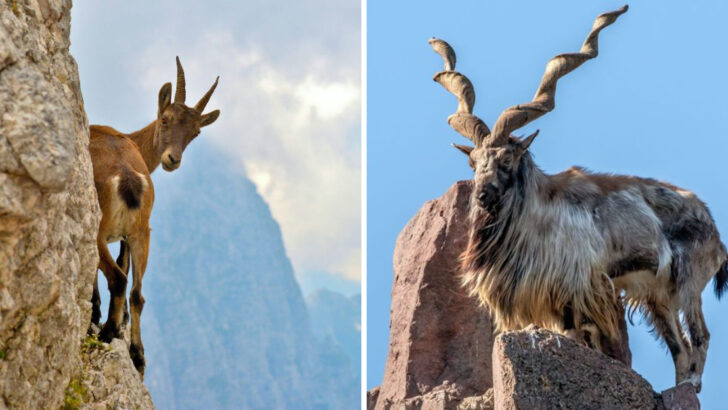Life at the top is brutal. The air is thin, the winds scream like banshees, and the temperatures could freeze your soul. Yet, some creatures don’t just survive here—they thrive. From the ghostly snow leopard to the sky-conquering bar-headed goose, these animals have turned Earth’s highest peaks into their playgrounds.
Imagine clinging to a sheer cliff face with nothing but tiny hooves, soaring over the Himalayas like it’s a casual Sunday flight, or growing a coat so warm it laughs in the face of winter. These animals aren’t just tough—they’re legends of resilience, defying nature’s harshest conditions with every step, leap, and glide.
Ready to meet the masters of the mountains? From fur-clad warriors to gravity-defying climbers, these 23 incredible creatures prove that when the going gets tough, the tough grow claws, hooves, and wings.
Snow Leopard
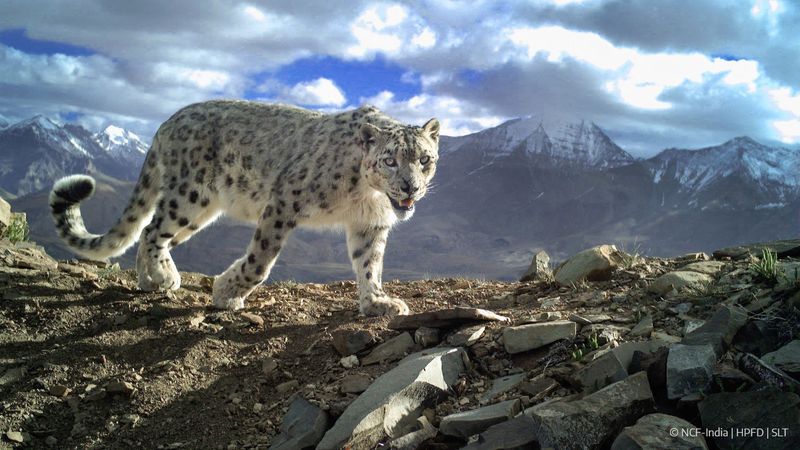
The snow leopard, often called the “ghost of the mountains,” possesses an extraordinary ability to navigate rugged terrains. Its thick, pale fur provides excellent camouflage against the snowy backdrop, while its long tail aids in balance.
Living at altitudes of 3,000 to 5,000 meters, this elusive feline’s powerful limbs and large nasal cavities adapt it to cold, low-oxygen environments.
Despite their resilience, snow leopards face threats from habitat loss and poaching. Conservation efforts aim to protect their mountain habitats, ensuring these magnificent cats continue to haunt the peaks.
Himalayan Tahr
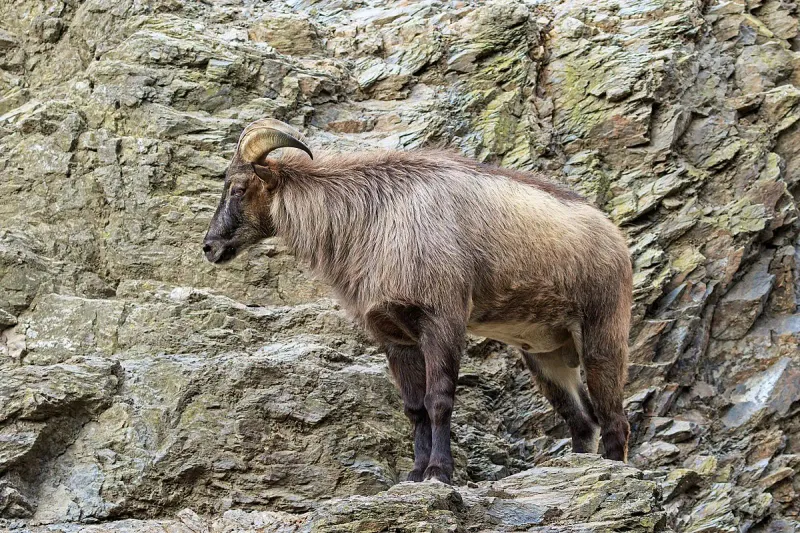
Adapted to the harsh mountain conditions, the Himalayan tahr showcases incredible climbing skills. Their shaggy coats and stocky build offer protection against cold temperatures.
Found primarily in the Himalayan ranges, these animals possess specialized hooves that provide exceptional grip on slippery rocks.
As herbivores, they graze on sparse vegetation, and their ability to traverse steep slopes allows them to escape predators. The Himalayan tahr’s resilience is a testament to nature’s adaptability, thriving where few others can.
Alpine Chough
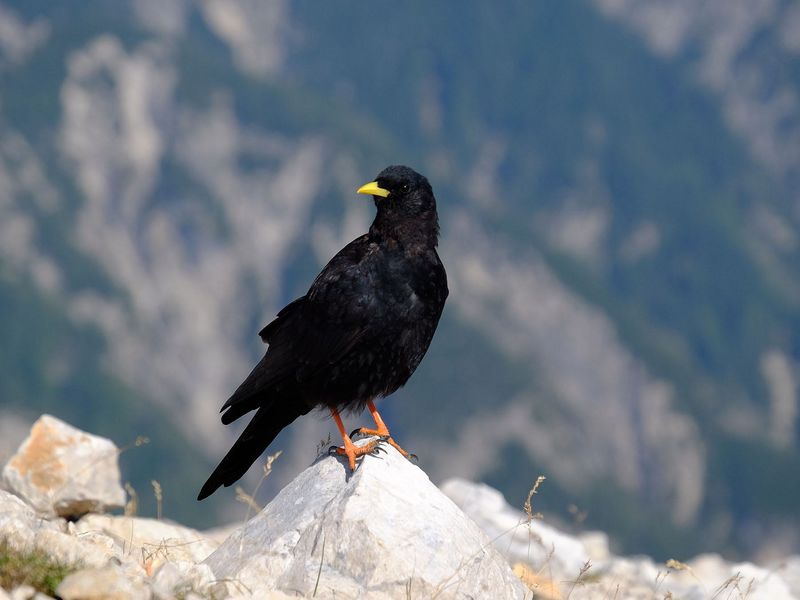
The Alpine chough, a member of the crow family, is a master of high-altitude living. Its glossy black feathers and distinctive yellow beak make it easily recognizable.
Found in the European Alps and other mountain ranges, this bird’s strong wings enable it to soar at altitudes of over 4,000 meters.
Remarkably, the Alpine chough is known for its playful aerial acrobatics. Its diet consists of insects and small invertebrates, making use of its keen eyesight to forage in rocky crevices. A true high-altitude survivor!
Yak
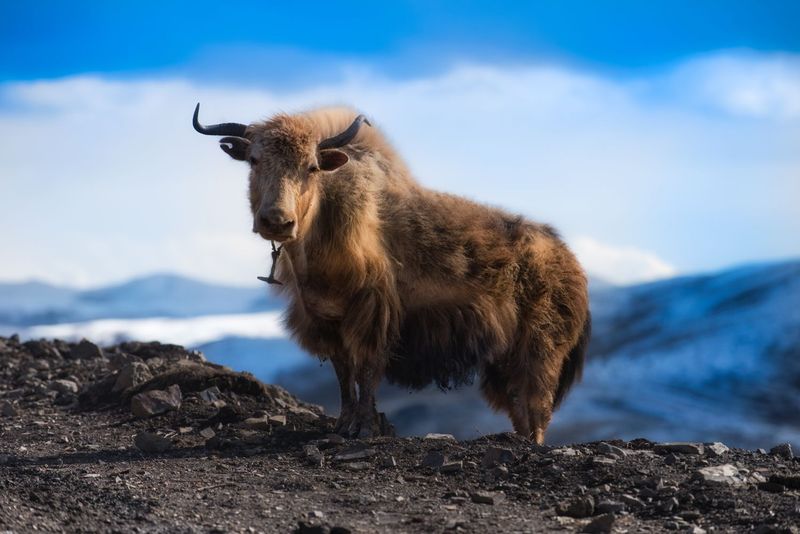
Yaks are quintessential mountain dwellers, renowned for their endurance in high-altitude conditions. Their long, thick fur provides insulation against freezing temperatures.
These massive bovines are native to the Tibetan Plateau, where they graze on sparse vegetation. Their wide hooves help them navigate the rocky terrain with ease.
Yaks have played a crucial role in the livelihood of local communities for centuries, providing milk, meat, and transportation. Their symbiotic relationship with humans highlights their adaptability and resilience.
Mountain Goat
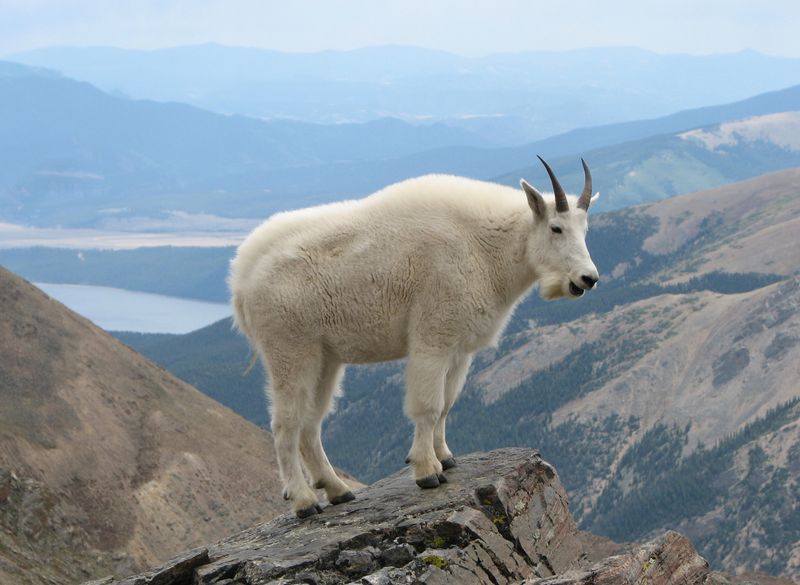
Mountain goats are incredible climbers, found in North America’s rugged mountainous regions. Their white, woolly coats offer camouflage against snow, while their muscular legs and cloven hooves provide exceptional climbing ability.
They thrive at elevations of up to 4,000 meters, grazing on grasses, herbs, and shrubs.
Adapted to cold environments, they can withstand temperatures as low as -50°F. Mountain goats’ surefootedness and resilience make them icons of alpine wilderness, embodying nature’s ability to conquer the harshest terrains.
Andean Condor
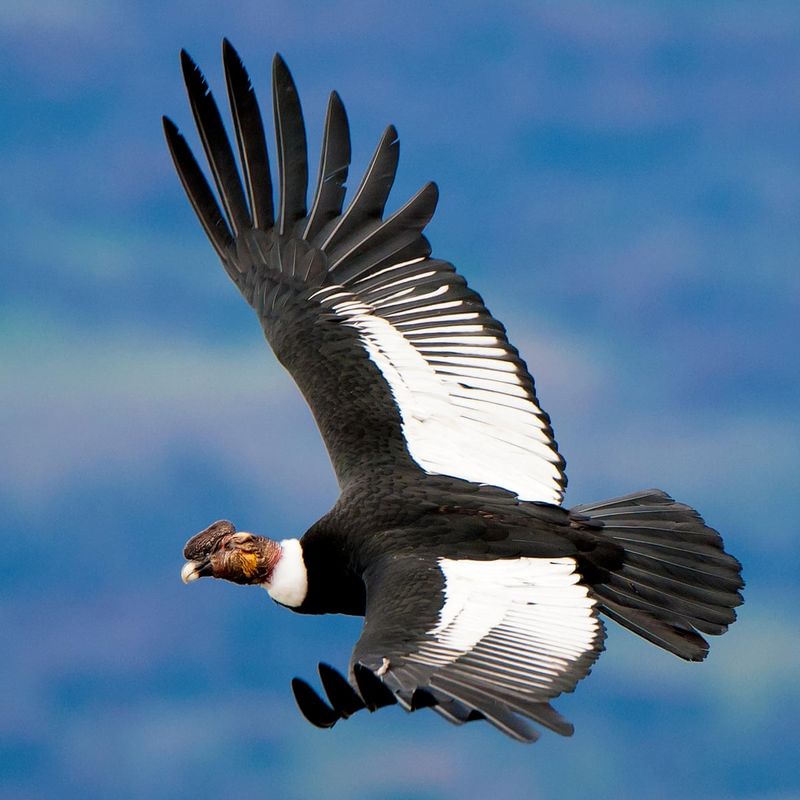
The Andean condor reigns supreme among the world’s highest flying birds, soaring above the Andes with a wingspan of up to 3.3 meters. Its ability to glide effortlessly on thermal currents makes it a symbol of strength.
Feeding primarily on carrion, the condor plays a vital ecological role, keeping the environment clean.
Despite its mastery of the skies, this magnificent bird faces threats from habitat loss and hunting. Conservation efforts are crucial to ensure its survival in the wild.
Tibetan Antelope
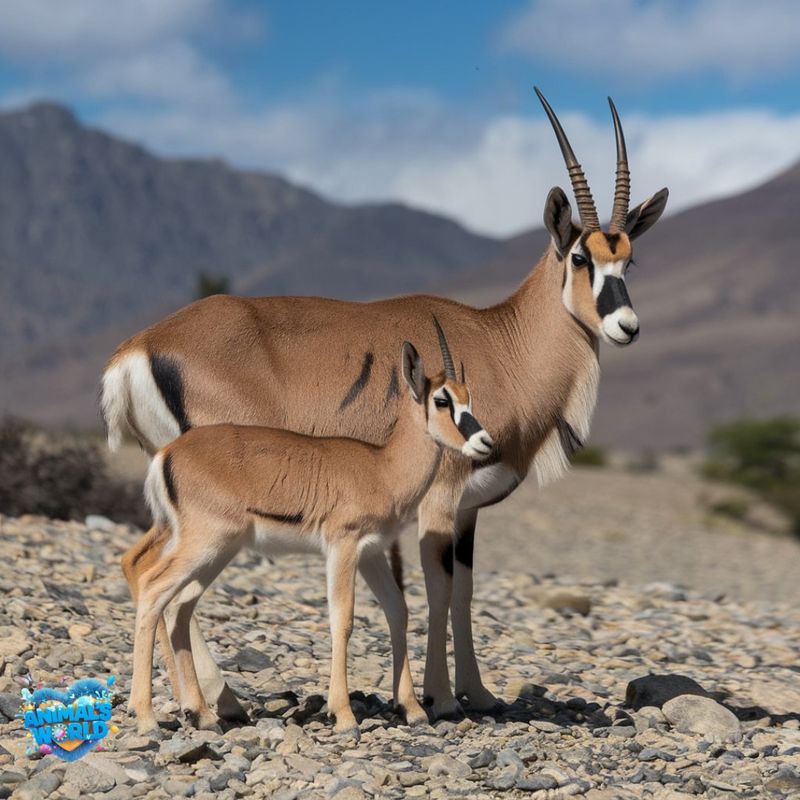
The Tibetan antelope, or chiru, is a graceful inhabitant of the harsh Tibetan Plateau. Its slender horns and dense undercoat protect it from the biting cold.
Chirus are well adapted to altitudes of over 5,000 meters, with large lungs and high red blood cell count aiding in oxygen utilization.
Unfortunately, they are heavily poached for their wool, known as shahtoosh. Conservation initiatives aim to curb this threat, ensuring the chiru remains a symbol of life on the roof of the world.
Musk Ox
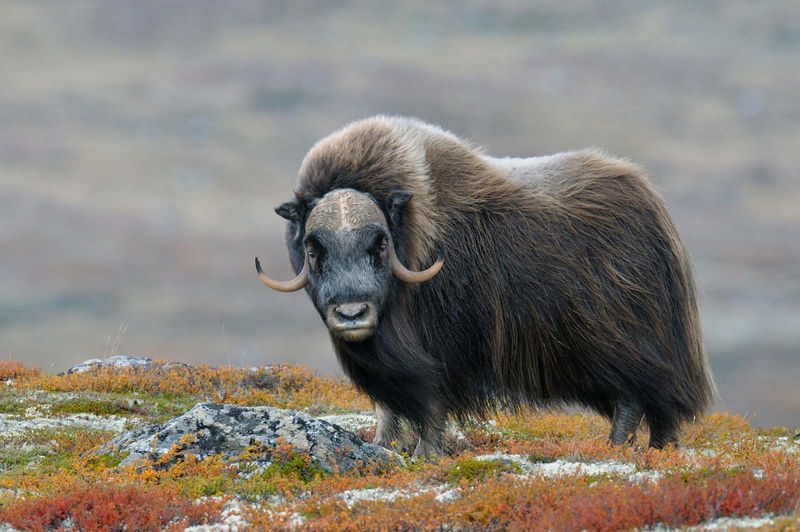
Musk oxen, with their shaggy coats and curved horns, are icons of arctic and alpine regions. Their dense wool, known as qiviut, is one of the warmest fibers, providing insulation against extreme cold.
Found in Greenland, Canada, and Alaska, they graze on grasses and willows. Their social structure helps them deter predators, forming defensive circles when threatened.
Musk oxen exemplify resilience, surviving where many others cannot. Their ability to endure and adapt continues to intrigue scientists and nature enthusiasts alike.
Pika

Pikas, small mountain dwellers, are known for their cute appearance and vocal calls. Resembling tiny rabbits, they inhabit rocky slopes across North America and Asia.
Pikas are active all year, gathering and storing food during the summer for the long winters. Their high-pitched calls help them communicate and warn of predators.
These adorable creatures are indicators of climate change, as rising temperatures threaten their habitats. Pikas’ resilience and adaptation strategies are a reminder of the delicate balance within mountain ecosystems.
Llama
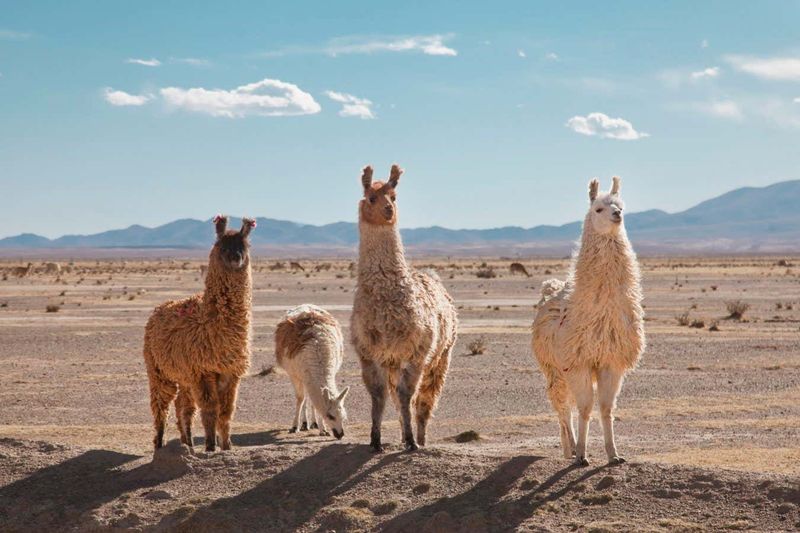
Llamas, native to the Andes, have become symbols of high-altitude adaptability. With their thick coats and sure-footedness, they navigate steep slopes with ease.
Llamas have been domesticated for centuries, valued for their wool, meat, and as pack animals. Their ability to thrive at altitudes of up to 4,000 meters showcases their resilience.
These gentle creatures are integral to Andean culture and economy. Their presence in the mountains is a testament to their long-standing bond with humans and their ability to withstand harsh environments.
Ibex

Ibexes, with their striking curved horns, are adept climbers found in the Alps, Pyrenees, and other mountainous regions. Their agile hooves and muscular bodies allow them to scale steep cliffs with ease.
These herbivores graze on tough vegetation, adapted to the sparse alpine environment.
Male ibexes often engage in dramatic horn-clashing battles during mating season. Their ability to thrive in high altitudes and rugged terrains highlights their exceptional resilience and adaptation skills, making them fascinating subjects of study.
Golden Eagle
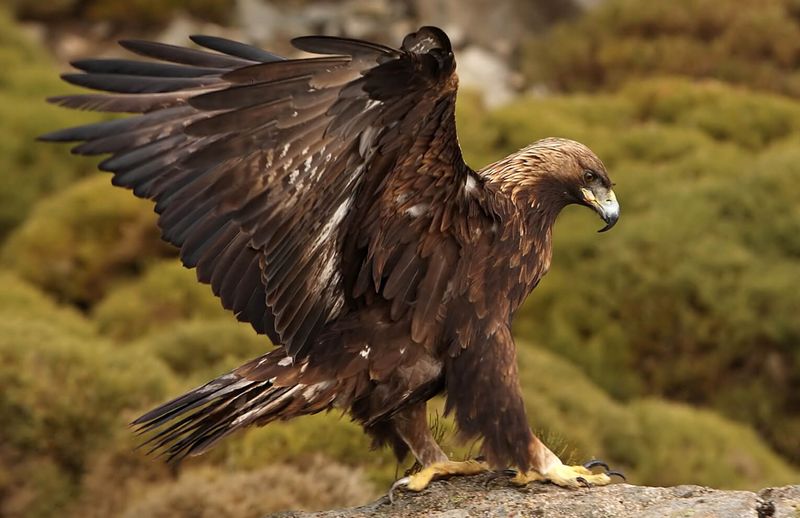
The golden eagle, revered for its strength and hunting prowess, is a master of mountain landscapes. With a wingspan of over two meters, it soars effortlessly, searching for prey.
These raptors inhabit mountainous regions across the Northern Hemisphere, using their keen eyesight to spot small mammals.
Golden eagles are top predators, maintaining ecological balance. However, they face threats from habitat destruction. Conservation efforts aim to protect their habitats, ensuring these majestic birds continue to reign over the skies.
Chamois
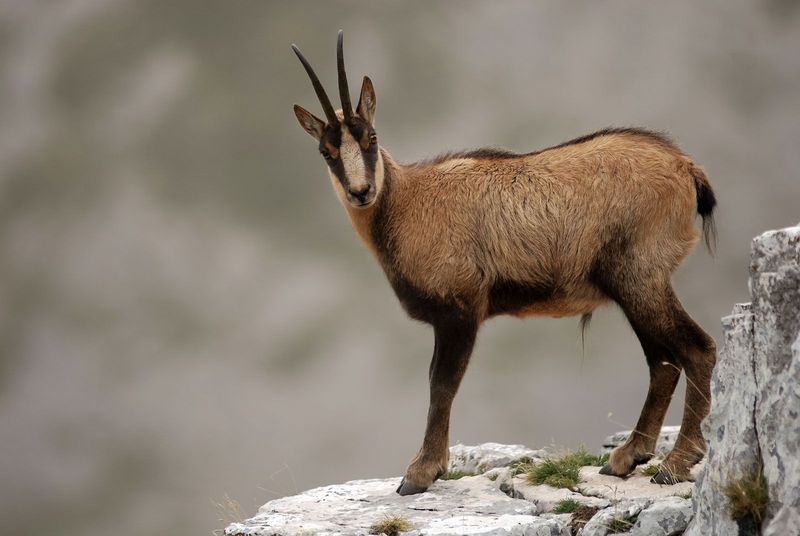
Chamois, agile and swift, are found in European mountain ranges such as the Alps and Carpathians. Their sleek bodies and backward-curving horns aid in navigating rocky terrains.
These herbivores graze on alpine vegetation, displaying remarkable agility and speed.
Chamois are known for their exceptional ability to leap across large gaps, a skill crucial for escaping predators. Their resilience and adaptability to harsh mountain environments make them a captivating sight for nature enthusiasts and hikers alike.
Saiga Antelope
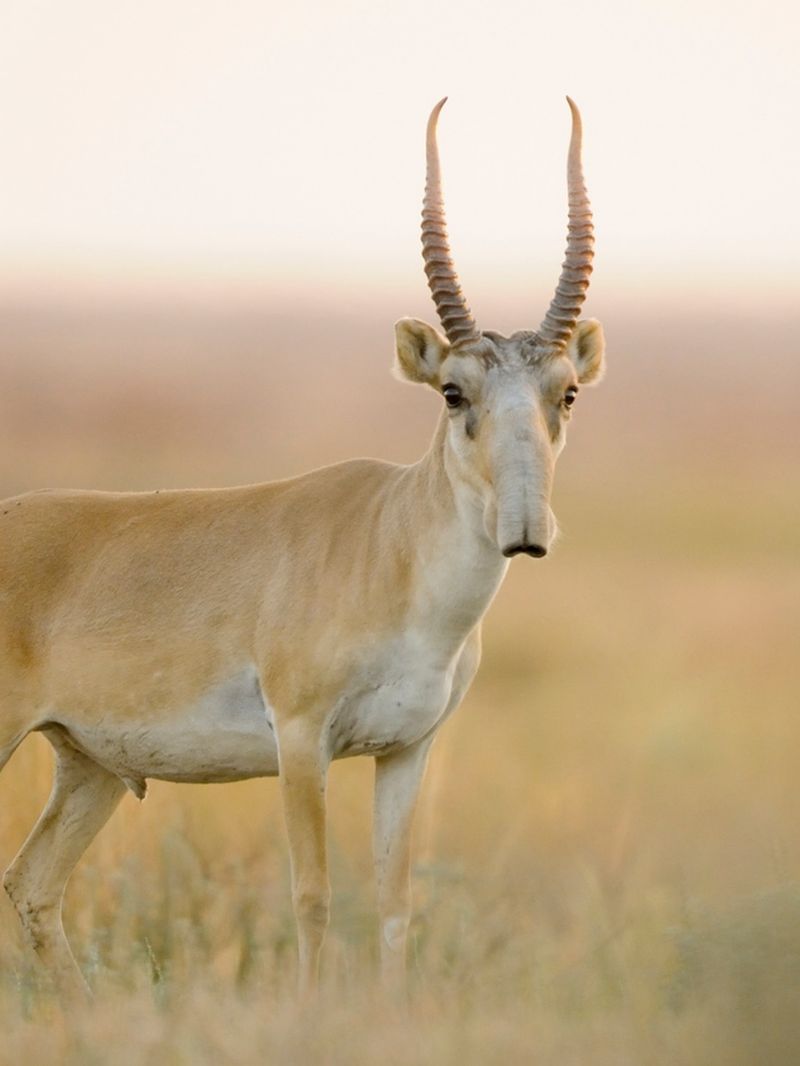
The saiga antelope, with its unique bulbous nose, is an extraordinary survivor of harsh environments. Found in Central Asia, these antelopes roam vast open plains and mountainous areas.
Their specialized noses help filter dust and warm cold air during migration. Saigas are incredible long-distance runners, capable of covering vast distances in search of food.
Despite facing severe population declines due to poaching and habitat loss, conservation efforts are underway to protect these remarkable creatures, highlighting their resilience and ecological importance.
Bar-headed Goose
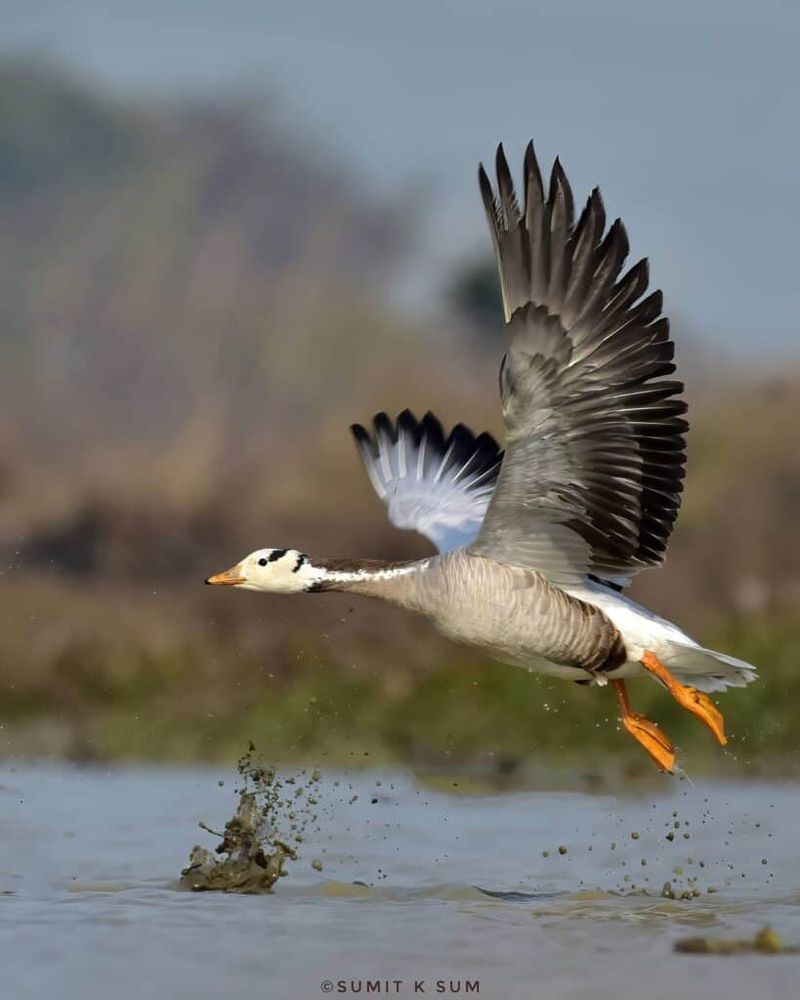
Bar-headed geese hold the record for the highest altitude flight among birds, crossing the Himalayas at over 8,000 meters. Their striking black and white plumage is easily recognizable.
These geese have adapted to extreme altitudes with efficient oxygen usage and a unique hemoglobin structure.
During migration, they undertake one of the most challenging journeys in the avian world. Conservationists study their migration patterns to understand how climate change affects high-altitude species. Bar-headed geese exemplify nature’s remarkable adaptability to extreme conditions.
Snowcock
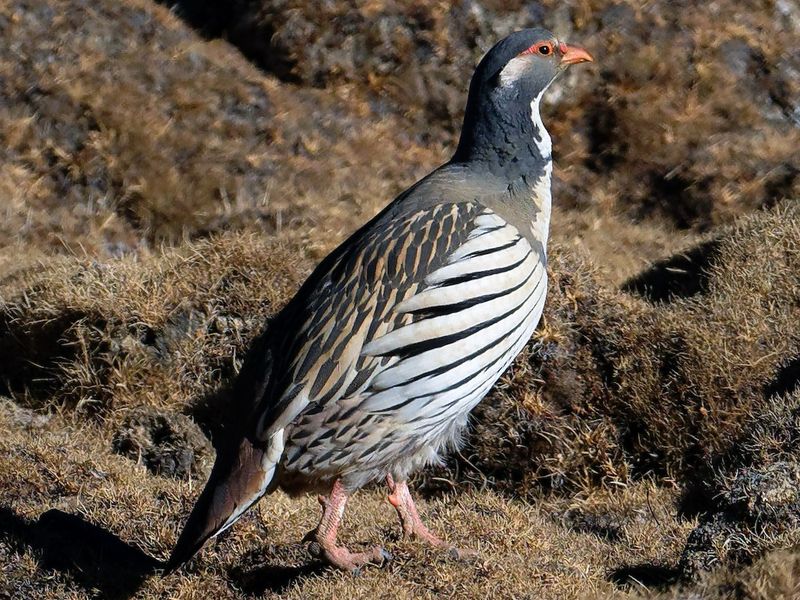
Snowcocks, part of the pheasant family, are residents of high-altitude regions in Central Asia and the Himalayas. Their mottled gray and white plumage provides excellent camouflage in rocky, snowy terrains.
These birds are well adapted to cold environments, often found at elevations of 3,000 to 5,000 meters. Their robust bodies and strong legs enable them to forage in harsh conditions.
Snowcocks’ resilience in extreme environments highlights their unique adaptations, making them intriguing subjects for ornithologists and nature enthusiasts.
Mountain Hare
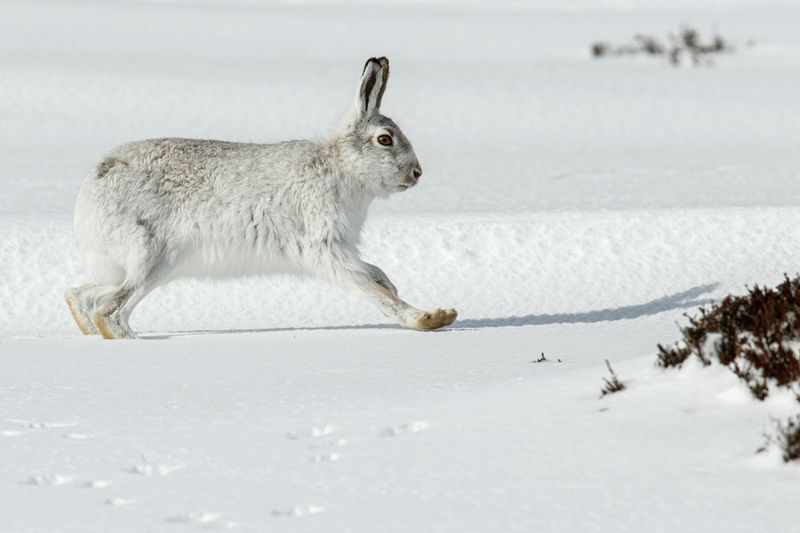
Mountain hares, with their seasonal fur changes, thrive in cold, mountainous climates. In winter, their fur turns white, providing camouflage against snow, while in summer, it changes to brown.
Found in the Alps, Scottish Highlands, and other regions, they are well adapted to high altitudes. Their powerful hind legs allow for swift movement across rocky terrains.
Mountain hares are important prey for predators like eagles and foxes, playing a crucial role in the food chain. Their adaptability and resilience make them fascinating creatures of the highlands.
Snow Partridge
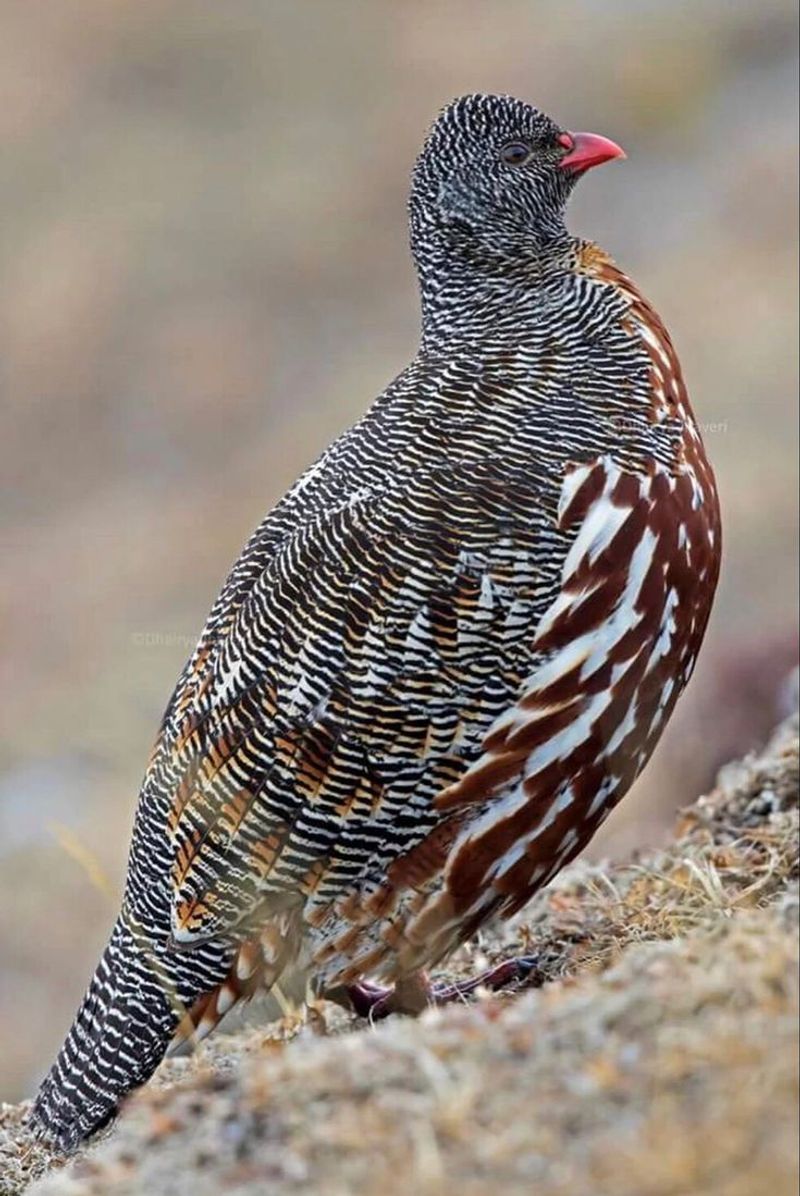
The snow partridge, native to the high-altitude regions of the Himalayas, is a master of camouflage. Its speckled brown and white plumage blends seamlessly with the rocky, snowy surroundings.
These birds are well adapted to cold climates, often found at elevations between 3,500 and 5,000 meters. Their strong legs and robust bodies enable them to forage and evade predators effectively.
Snow partridges’ resilience and ability to thrive in harsh environments make them captivating subjects for birdwatchers and nature lovers.
Markhor
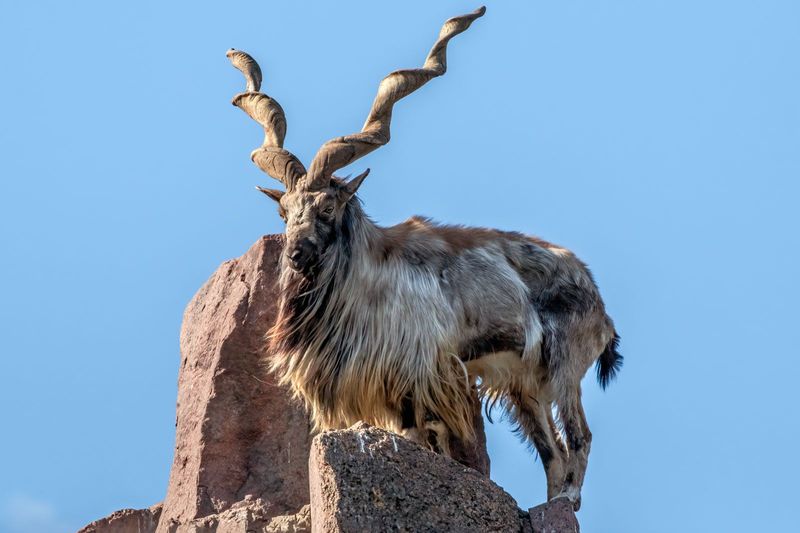
The markhor, Pakistan’s national animal, is known for its striking spiral horns and impressive agility. Inhabiting the rugged regions of the Himalayas and Karakoram, these goats are expert climbers.
Their thick coats protect them from the cold, while their strong hooves allow for sure-footed navigation across steep slopes. Markhors browse on shrubs and grasses, showcasing adaptability to sparse alpine vegetation.
Conservation efforts have helped increase markhor populations, emphasizing the importance of protecting these unique animals and their habitats.
Vicuña
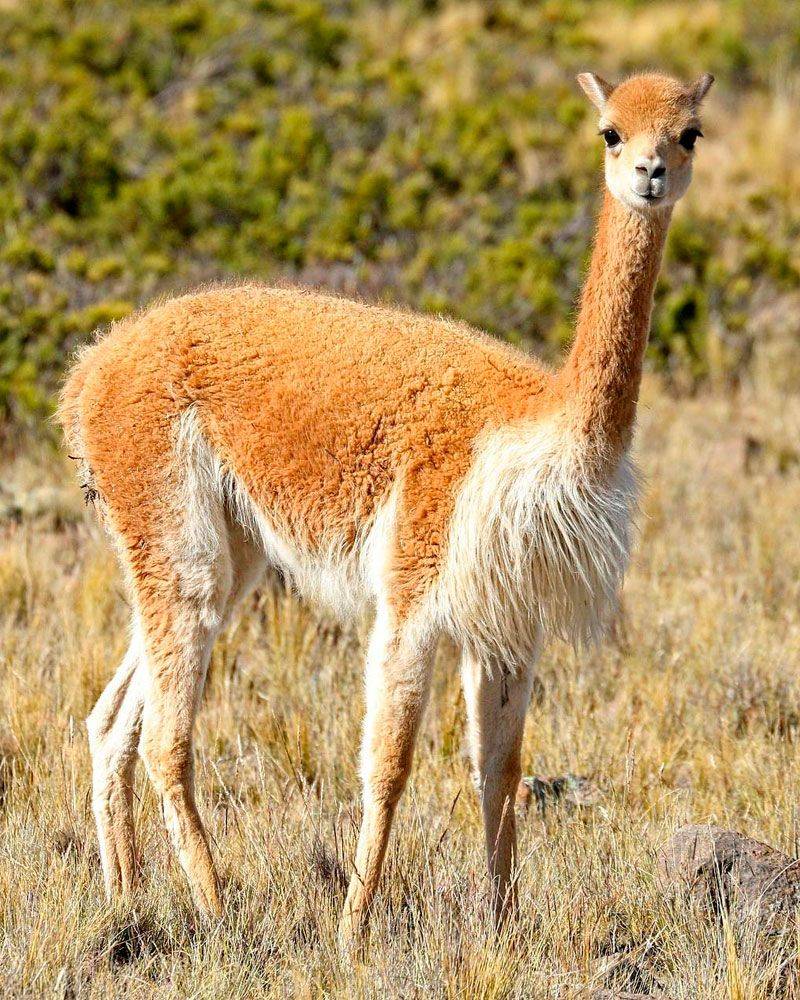
Vicuñas, relatives of llamas, are elegant creatures native to the high Andes. Known for their fine, golden-brown wool, they are adapted to cold, arid environments.
These animals graze on grasses and shrubs, often found at altitudes of over 4,000 meters. Their keen senses and agility help them avoid predators.
Vicuñas were once endangered due to hunting for their valuable wool, but conservation efforts have successfully restored their populations. Their resilience and beauty make them a symbol of high-altitude life and conservation success.
Himalayan Marmot

Himalayan marmots, large ground squirrels, are well adapted to life at high altitudes. Their thick fur and fat reserves help them survive harsh winters.
These social animals live in colonies, digging elaborate burrow systems on alpine meadows. They feed on grasses, herbs, and roots.
During the warmer months, marmots are active and playful, often seen basking in the sun. Their ability to hibernate through winter showcases nature’s strategy for survival. The Himalayan marmot’s resilience and social structure make it a fascinating subject of study.
Tibetan Fox
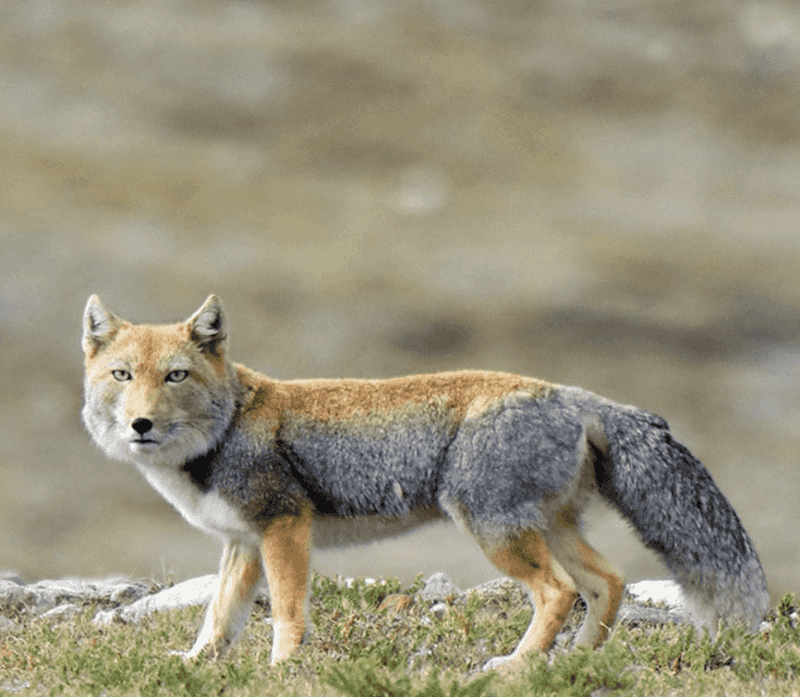
The Tibetan fox, with its distinctive square face and bushy tail, is a unique predator of the Tibetan Plateau. Its dense fur provides insulation against the cold, while its keen senses aid in hunting.
These foxes primarily prey on small mammals like pikas, showcasing their adaptation to the plateau’s ecosystem.
Despite their elusive nature, Tibetan foxes are crucial for maintaining ecological balance by controlling rodent populations. Their resilience in harsh environments underscores their role as key players in the plateau’s biodiversity.
Himalayan Rock Agama
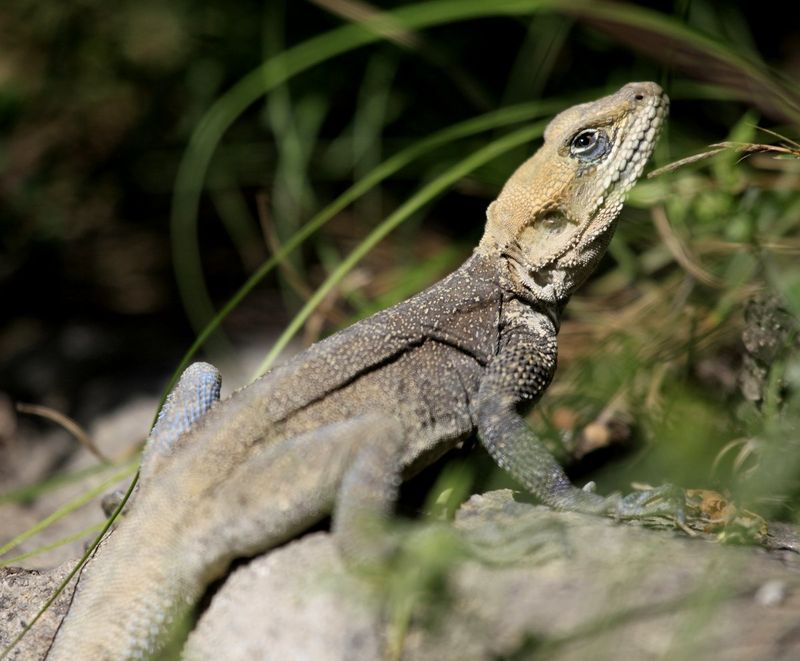
In the rugged terrains of the Himalayas, the Himalayan Rock Agama makes its home. This lizard, known for its vibrant coloration, thrives on rocky cliffs and ledges. It basks in the sun to regulate its body temperature. Agile and swift, it can quickly dart between rocks, evading predators.
Adapted to high altitudes, the Agama has a sturdy build, allowing it to withstand the harsh mountain climates. Its skin coloration provides excellent camouflage against the rocky backdrop. These creatures are social, often seen in groups, and communicate through rapid head bobs and push-ups. Their diet mainly consists of insects and plants.

